When John Z. Kiss was nine years old he stayed up late to watch Neil Armstrong take those first steps onto the surface of the moon and tell the world, “That’s one small step for man, one giant step for mankind.”
“My life is sort of the space era,” says Kiss, a professor of biology and dean of the UNC Greensboro College of Arts and Sciences.
But there’s no way he could have known in 1969 that he would one day do research that could help humans take longer space flights and live on the moon or Mars.
Kiss is not a rocket scientist. But he’s one of a small cadre of space biologists, scientists who study how living systems function beyond the Earth’s atmosphere.
Kiss has devoted more than 25 years to understanding what happens to plants in space. It’s critical work because, as NASA and other space agencies around the world plan for potential bases on the moon, interplanetary flights, and putting humans on Mars, plants will be essential.
In the sealed environment of a spacecraft, space station, or extraterrestrial base, plants could help turn carbon dioxide exhaled by astronauts back into oxygen they can breathe in again. They could also produce food — essential when the nearest grocery store is back on Earth, hundreds of thousands or millions of miles away.
“Everything I’ve done has really been basic research in plants,” Kiss explains. “We pursue basic discoveries, and some of them will have practical benefits in the long term.”
Kiss’ work could also have earthly benefits. By studying how plants respond to the stresses of space, for example, we could gain insights that help us understand how we might help plants adapt to stresses such as climate change here on Earth.
The UNCG biologist has focused on plant physiology and how plants respond to environmental cues. This is an important question for space research, because important plant stimuli, such as gravity and light, can be different off-Earth. Knowing how plants will or won’t grow in those environments is the first step to actually growing plants as part of life support systems in space.
Since 1997, Kiss has led or co-led experiments where plants ride into space on rockets and are then exposed to different environmental stimuli. His most recent extraterrestrial experiment was in the summer of 2017.
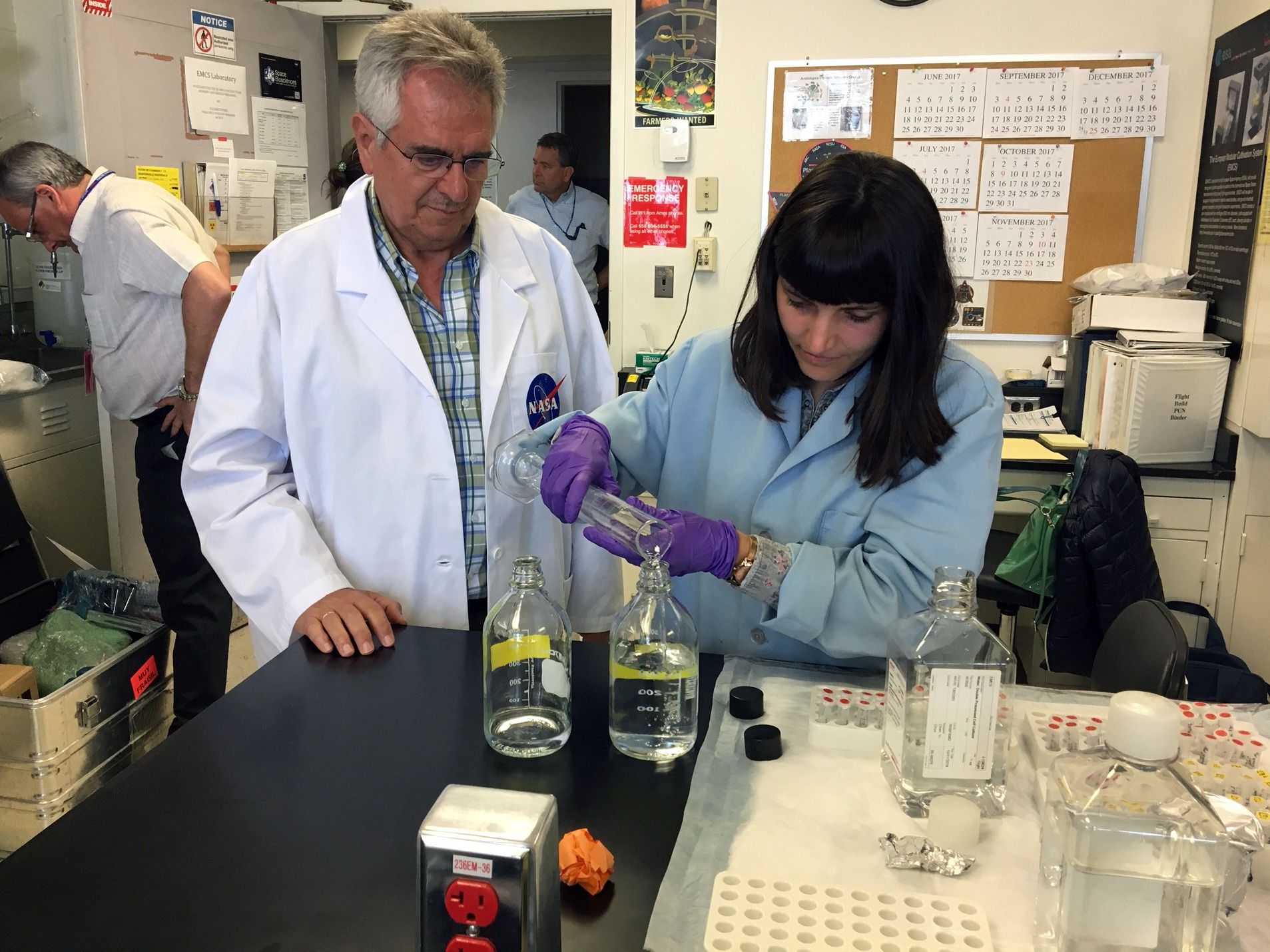
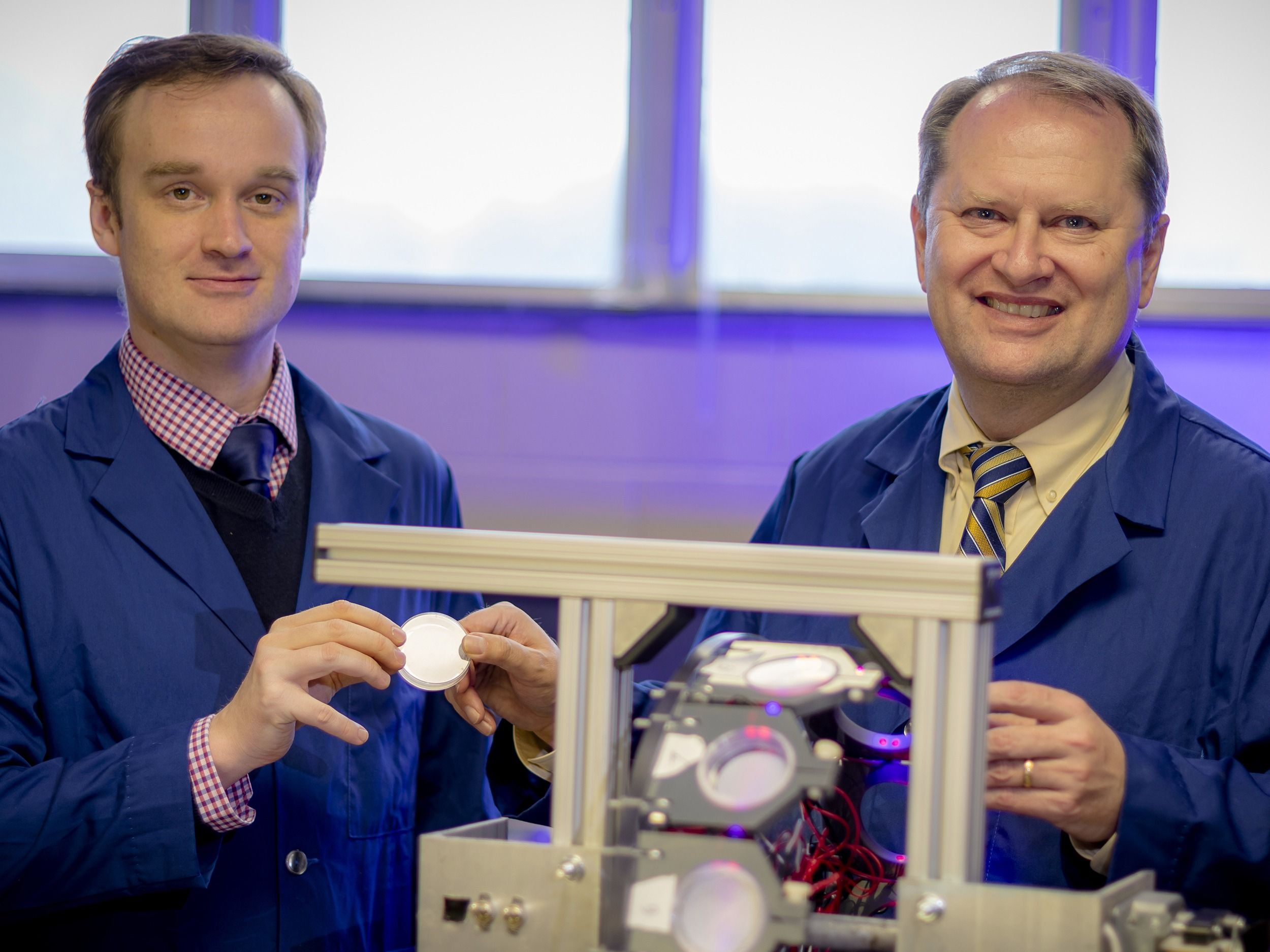

Kiss and his colleagues have been involved in nine NASA space shuttle missions and five NASA-contracted SpaceX missions.
Above left: samples from one of Kiss’ spaceflight experiments are processed at a NASA lab. Above center and right: postdoctoral researcher Josh Vandenbrink and Kiss (right) load samples onto a clinostat, a device that simulates microgravity and helps them analyze results from the experiments. See more photos on UNCG Research Flickr.
Light and gravity interact
One of Kiss’ most striking discoveries has implications for growing plants on other worlds. It also sheds light on how evolution has changed the way the plants respond to their environments.
Two of the most important environmental stimuli for plants are light and gravity.
Generally, plants grow toward light sources. Put a potted plant on a window sill and you may find it takes on a distinctive curved profile as it grows toward the light. This tendency is called phototropism.
Likewise, plants respond to the force of gravity. Generally, roots grow down toward the gravitational pull, shoots and stems away from it.
There are subtle interactions between these two tendencies that would be nearly impossible to detect on earth, but which have come into sharp focus in the microgravity environment of low Earth orbit.
Kiss and his collaborators send hundreds of tiny seeds into space, to the International Space Station. Once there, they’re placed in a centrifuge and cultivated. As the seeds sprout and become seedlings, they can be spun at different speeds in the centrifuge to simulate different levels of gravity — such as the levels on the moon and Mars — to assess how they respond. If the centrifuge is off, then the young plants are in a microgravity environment.
On Earth, when flowering plants grow toward light, they’re responding to the higher frequency, blue wavelengths. Shine a red light on a flowering plant, and, although it can use that energy for photosynthesis, it won’t grow toward the light source.
It turns out, this bias toward blue light is switched off in low gravity environments. In lower gravity, Kiss’ plants would also grow toward red light.
“That was really an amazing discovery,” Kiss says.
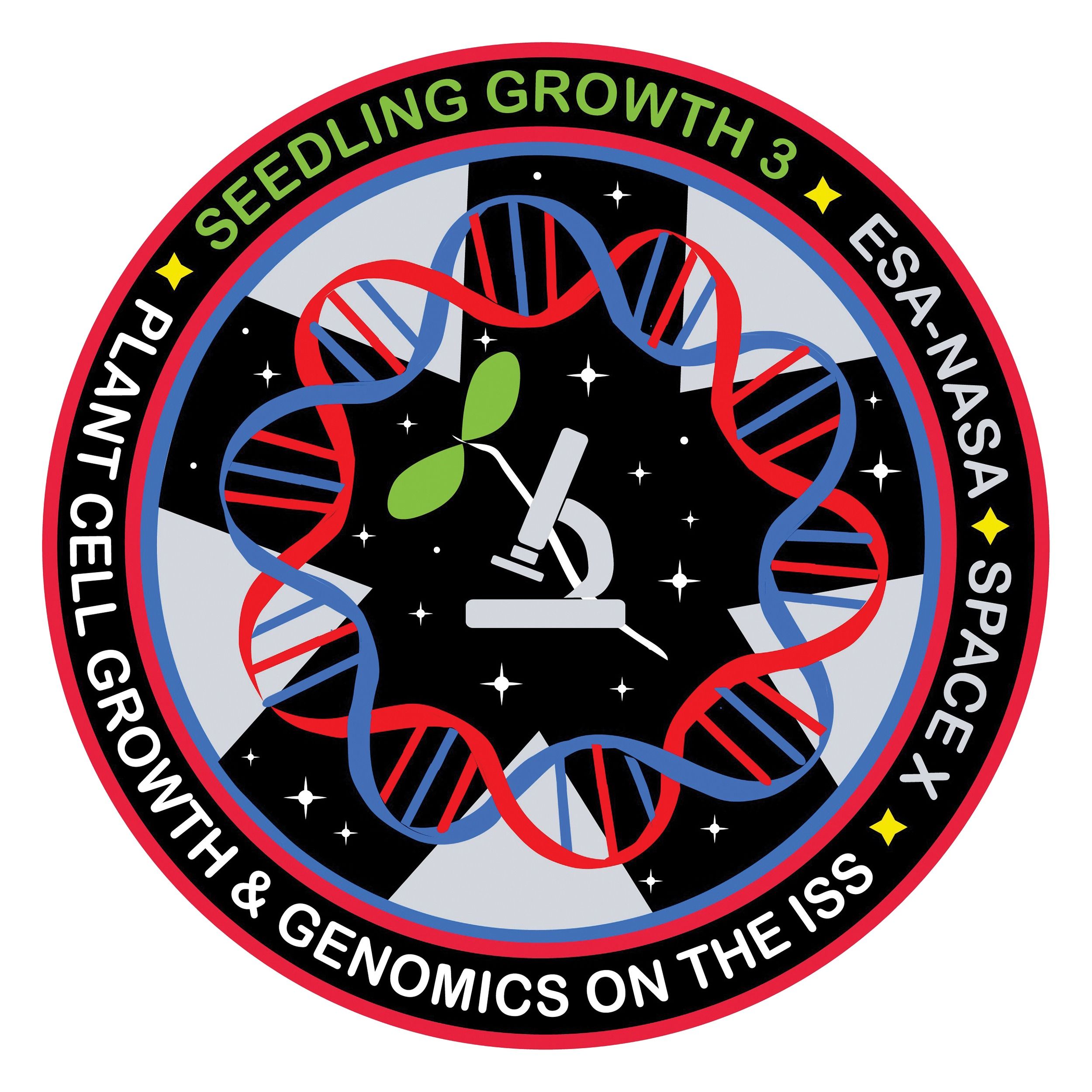
Ambassador for Space Science. Kiss has been an outspoken advocate for NASA and its research and exploration mission. In 2014, he was awarded NASA’s Medal for Outstanding Public Leadership for both his research accomplishments and his outreach and advocacy on behalf of NASA’s work.
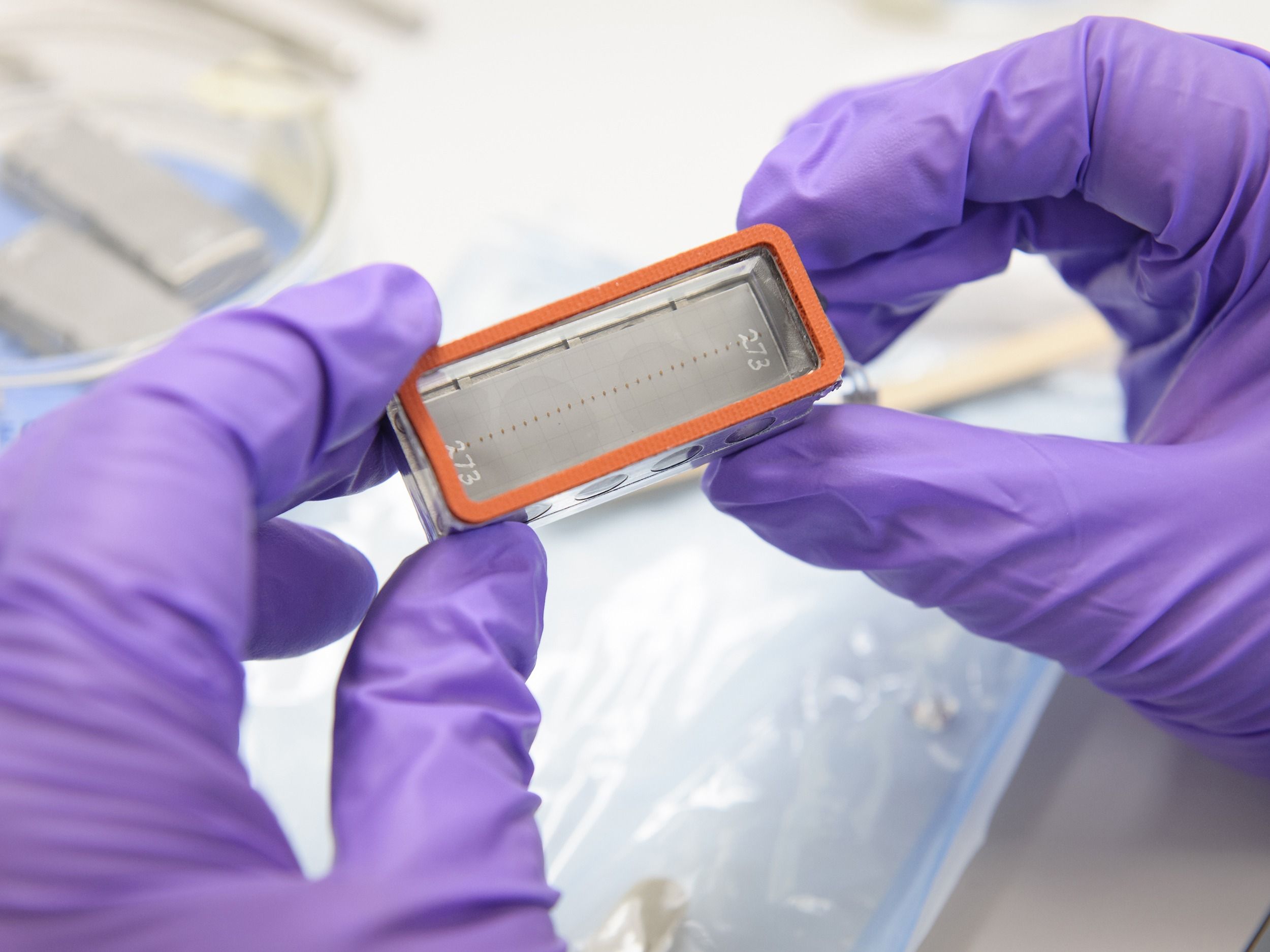
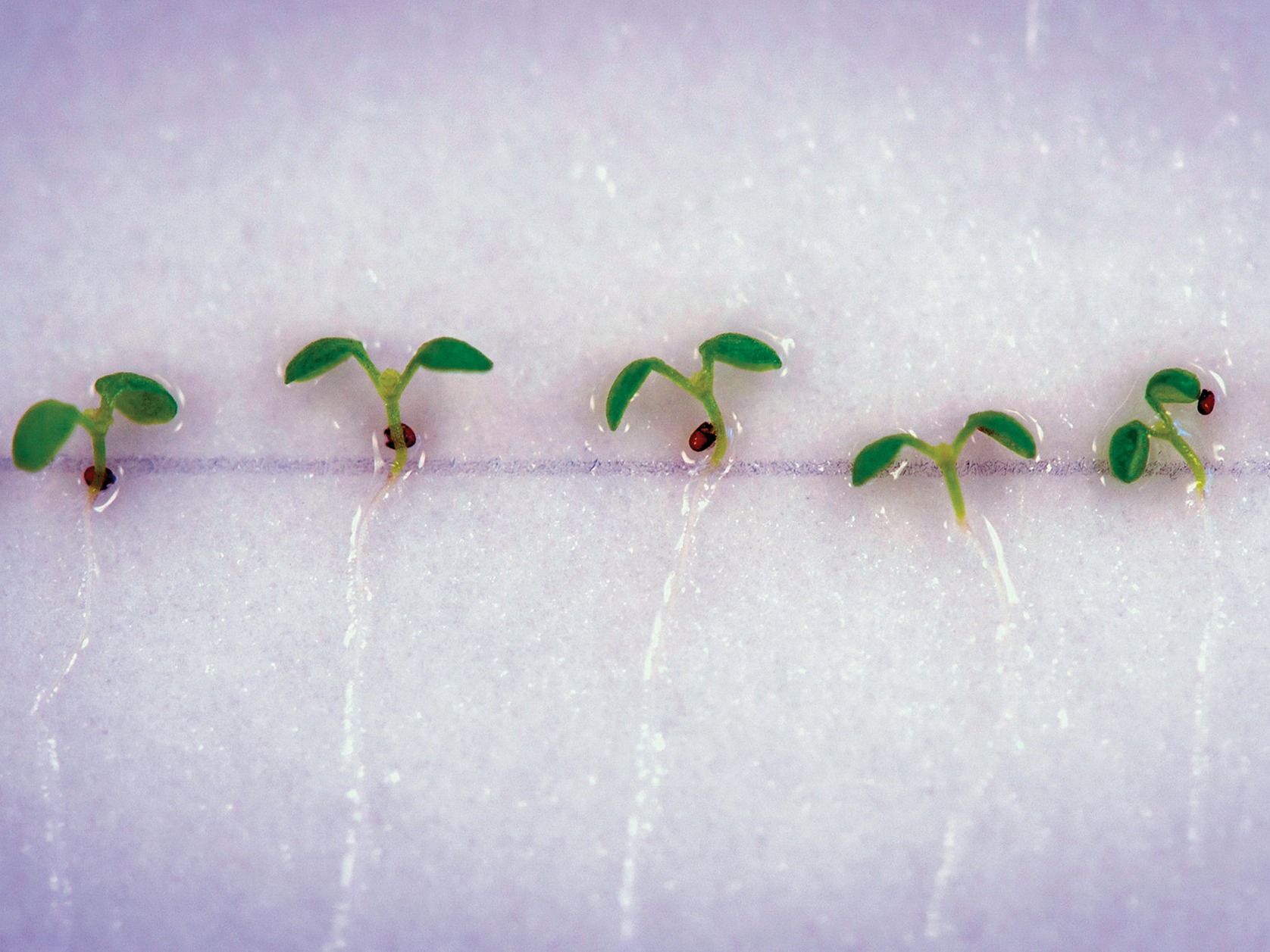

In a NASA lab prior to launch, cassettes are filled with Arabidopsis thaliana seeds (photo left). With a rapid life cycle and fully sequenced genome, the flowering weed is a model organism for plant biology research (photo center). The seeds are allowed to germinate on the International Space Station.
Above right: NASA astronaut Tom Marshburn retrieves an experimental container of seedlings, to be frozen and returned to Earth for further study. See more photos on UNCG Research Flickr.
Decoding genetic secrets
The switch is likely based on mechanisms deep in the plant’s genetic code that could go back some 140 million years, when the earliest flowering plants evolved an affinity to blue light. That affinity may relate to the refraction of light through Earth’s ancient atmosphere, which was quite different millions of years ago compared to today.
Understanding the genetic component of these tropisms is one of postdoctoral fellow Josh Vandenbrink’s interests. He helps run Kiss’ lab and is a geneticist by training. He’s focused on “looking at the genes that are turned on and off in space.”
In one of their International Space Station experiments, Vandenbrink and Kiss discovered that it’s not just the phototropism of shoots that’s altered by different levels of gravity, but also how plant roots respond to light.
On Earth, roots usually grow away from blue light. After all, if they’re receiving high energy blue light, chances are they’re not in the ground, where they’re supposed to be. But Kiss’ experiments in the last few years have found that in very low levels of gravity, roots, too, will grow toward blue light.
“As you slowly turn up gravity, that reaction will turn off,” Vandenbrink says. “[Plants are] looking at light and gravity … integrating the signals, then deciding which way to grow.”
When these plants were returned to Earth, Vandenbrink used a technique called RNA sequencing to identify which genes were being turned on and off. That, in turn, sheds light on how different components of a plant’s DNA control phototropic and gravitropic activity, and perhaps other types of tropism, too.
It also presents an interesting genetic mystery. “It’s very puzzling to me that you can see some different responses in these plants when there’s never been a gradient of gravity for them to experience,” Vandenbrink says.
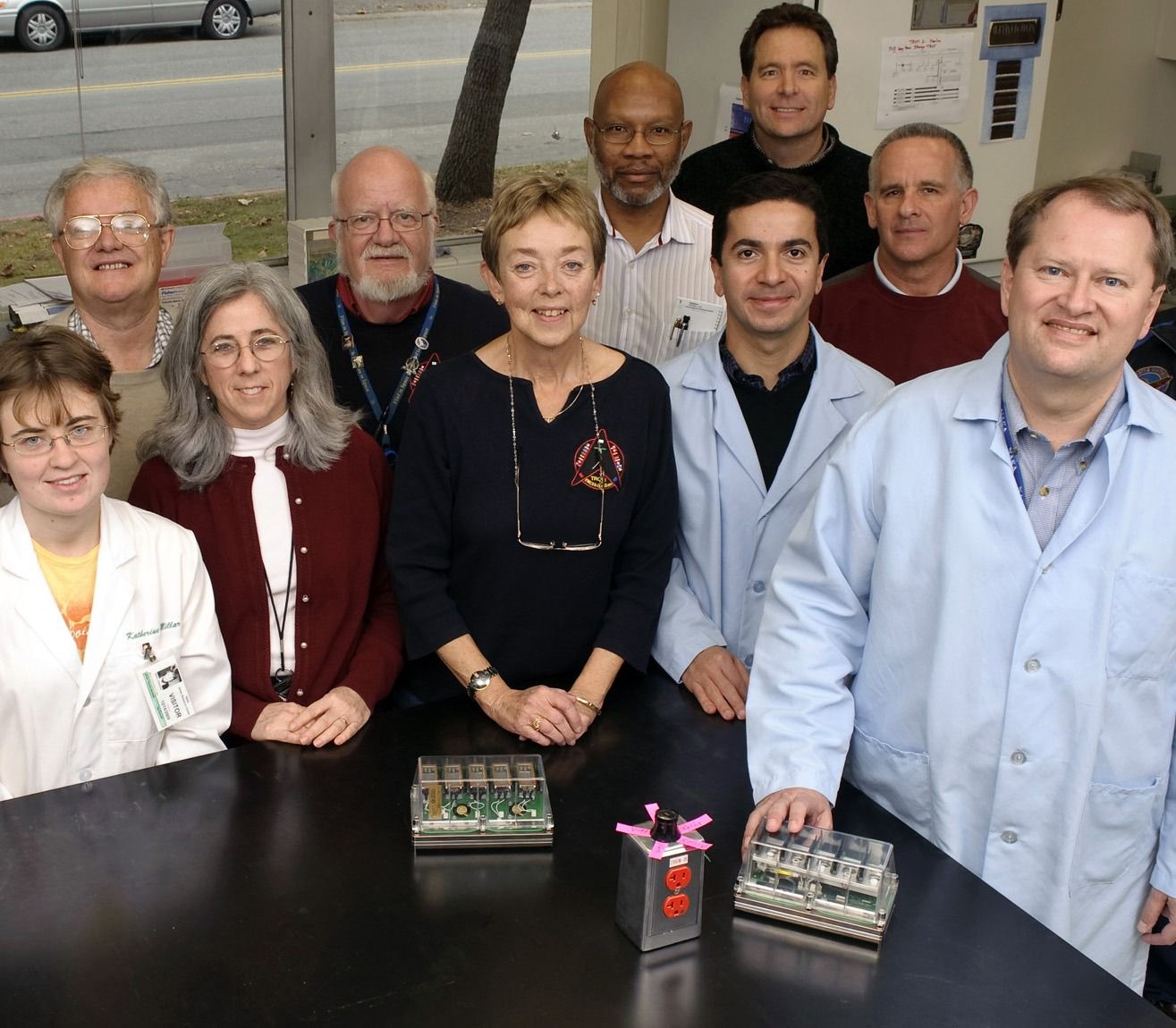
Above, Kiss works with the science and engineering team at NASA Ames Research Center prior to the 2017 launch.
Kiss’s advocacy for NASA includes speaking to the media and giving talks to civic clubs, school groups, and other organizations. He has sat on advisory panels for NASA and the European Space Agency, reviewed proposals for the Italian Space Agency, and spoken at a symposium organized by the Japanese Space Agency.
Growing plants in space
Unlocking these genetic and physiological components that control tropisms will help scientists better understand how and why plants grow the way they do — whether on Earth or on a space station.
The research has implications for how we grow plants in different off-Earth environments.
The phototropic changes Kiss has identified are seen in low-gravity environments, like the near-zero gravity of the space station. But as the speed of the centrifuge — and hence the G-force — increases, these responses switch off. At around 0.3 G, the plants behave like they do on Earth.
Why does that matter? Because the moon’s gravity is about 0.17 G, so these unusual phototropic effects would apply to plants grown there. But Mars’ gravity is stronger — about 0.38 G — above the level at which these phototropic effects switch off.
“The gravity on Mars is probably enough for these plants to grow like they would on Earth,” Kiss says. “But on the moon, it wouldn’t be enough.”
That might suggest different designs for cultivation systems developed for the moon, for Mars, or for a long-range spacecraft, like that which would be needed for the months-long voyage to the red planet.
There’s plenty more work to be done. There are other types of tropisms, such as hydrotropism — growth toward water. And different species can exhibit different tropistic behaviors. Sunflowers, which Vandenbrink studied earlier in his career, turn themselves overnight to face east in the morning when the sun rises.
Understanding the genetic and physiological components underlying tropisms provides a rich vein for research.
“I think there are other potentially important discoveries we can make in microgravity,” Kiss says. “There’s this sense of discovery, that’s part of why we do it.”
And ultimately, he says, “I would argue that space will maybe help us solve some of the longer-term problems on Earth.”
For that to happen, humans will have to continue to explore “the final frontier,” going farther and staying longer. And we’ll probably take plants with us.
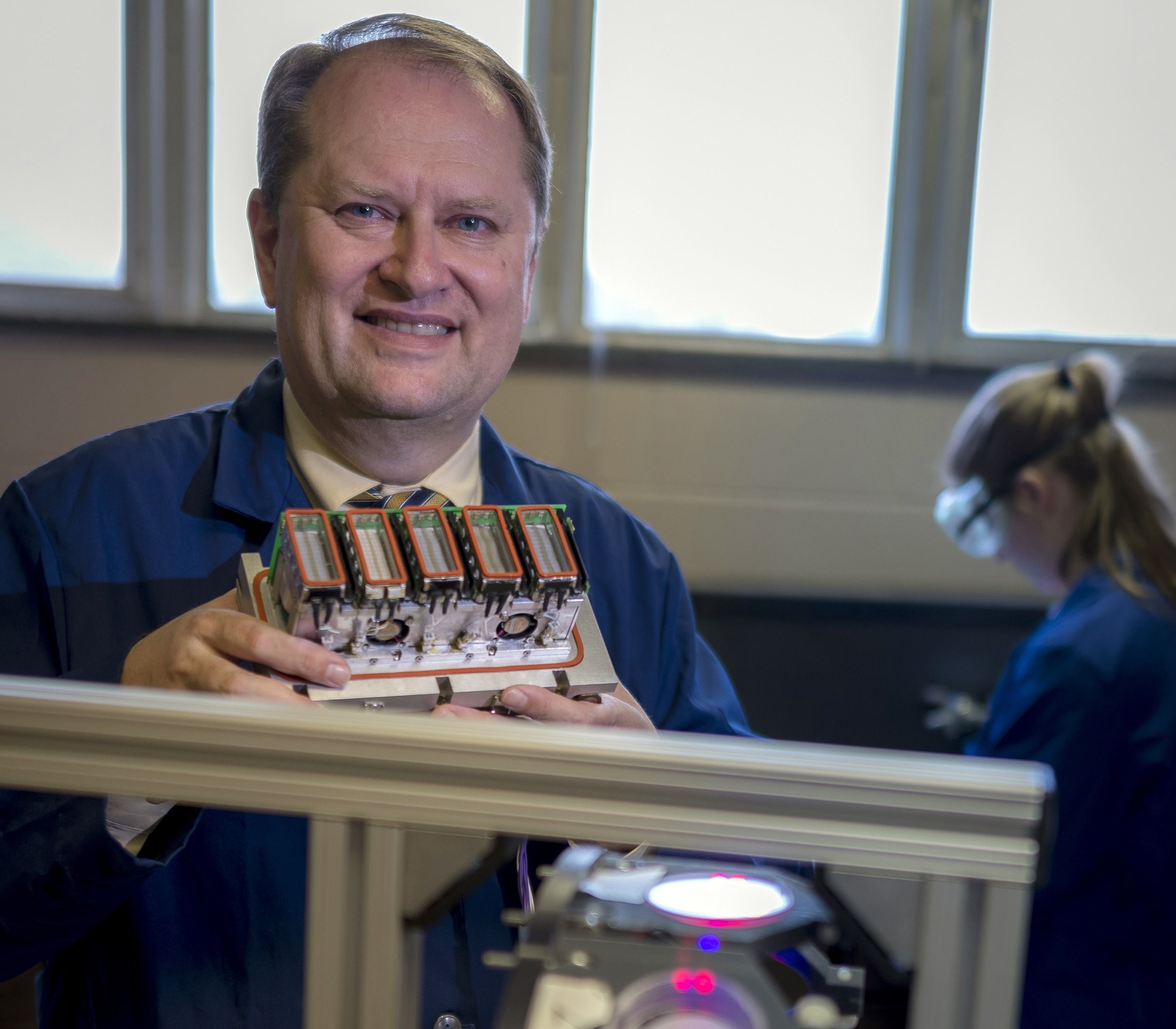
Kiss is the former president of the American Society for Gravitational and Space Research. In his spare time, he reviews popular books about space exploration and space history.